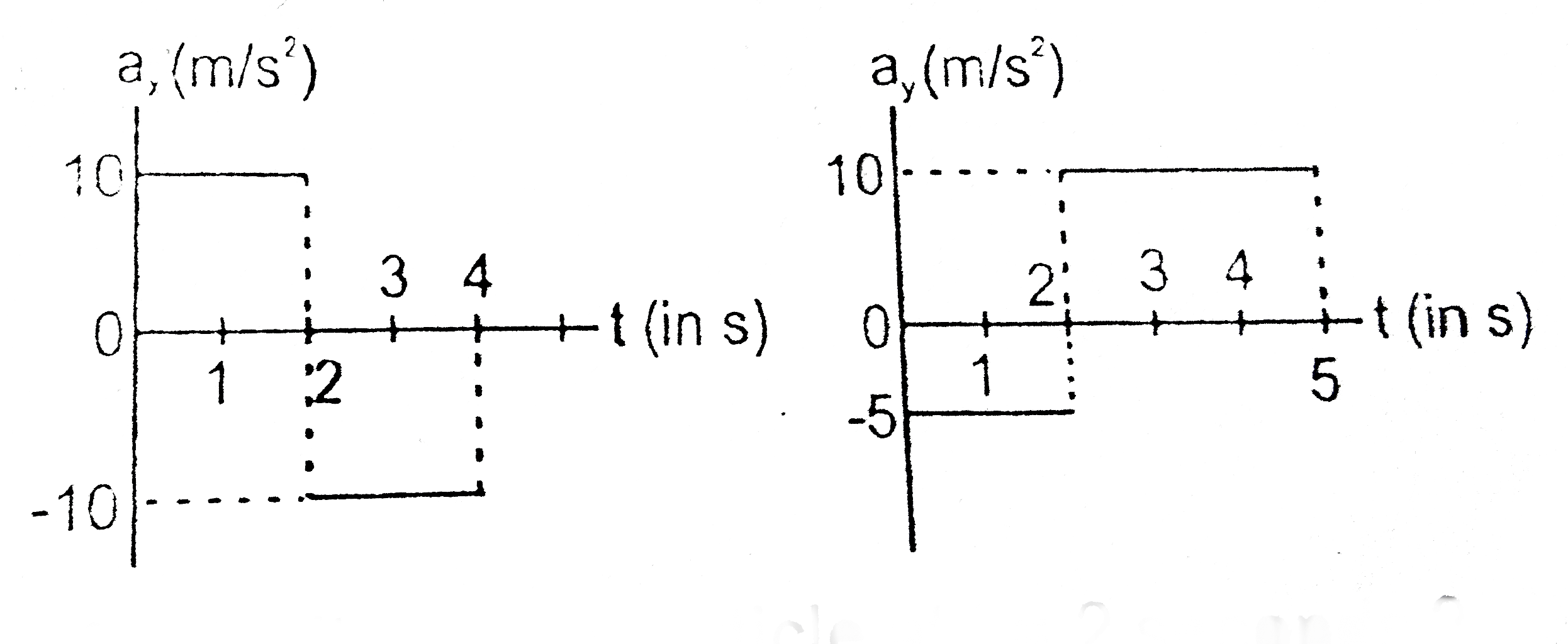A particle motion on a shape curve is governed by x=2sint, y = 3cost and z=√5 sint. What is the magnitude of velocity of the particle at any timet?
3√2sint
3
3√2cott
3√2
The correct Answer is:B
To find the magnitude of the velocity of the particle at any time t, we will follow these steps:
Step 1: Define the position vector
The position of the particle is given by the equations:
- x=2sint
- y=3cost
- z=√5sint
We can express the position vector r as:
r=2sint^i+3cost^j+√5sint^k
Step 2: Differentiate to find the velocity vector
The velocity vector v is the derivative of the position vector with respect to time t:
v=drdt=dxdt^i+dydt^j+dzdt^k
Calculating each component:
- dxdt=ddt(2sint)=2cost
- dydt=ddt(3cost)=−3sint
- dzdt=ddt(√5sint)=√5cost
Thus, the velocity vector is:
v=2cost^i−3sint^j+√5cost^k
Step 3: Calculate the magnitude of the velocity
The magnitude of the velocity |v| is given by:
|v|=√(dxdt)2+(dydt)2+(dzdt)2
Substituting the components:
|v|=√(2cost)2+(−3sint)2+(√5cost)2
Calculating each term:
- (2cost)2=4cos2t
- (−3sint)2=9sin2t
- (√5cost)2=5cos2t
Combining these:
|v|=√4cos2t+9sin2t+5cos2t
|v|=√(4+5)cos2t+9sin2t
|v|=√9cos2t+9sin2t
Using the Pythagorean identity cos2t+sin2t=1:
|v|=√9(cos2t+sin2t)=√9=3
Final Answer
The magnitude of the velocity of the particle at any time t is 3.
The position of the particle is given by the equations:
- x=2sint
- y=3cost
- z=√5sint
r=2sint^i+3cost^j+√5sint^k
The velocity vector v is the derivative of the position vector with respect to time t:
v=drdt=dxdt^i+dydt^j+dzdt^k
- dxdt=ddt(2sint)=2cost
- dydt=ddt(3cost)=−3sint
- dzdt=ddt(√5sint)=√5cost
v=2cost^i−3sint^j+√5cost^k
The magnitude of the velocity |v| is given by:
|v|=√(dxdt)2+(dydt)2+(dzdt)2
|v|=√(2cost)2+(−3sint)2+(√5cost)2
- (2cost)2=4cos2t
- (−3sint)2=9sin2t
- (√5cost)2=5cos2t
|v|=√4cos2t+9sin2t+5cos2t
|v|=√(4+5)cos2t+9sin2t
|v|=√9cos2t+9sin2t
|v|=√9(cos2t+sin2t)=√9=3
The magnitude of the velocity of the particle at any time t is 3.
Topper's Solved these Questions
- KINEMATICS BOOK - MTG GUIDECHAPTER - KINEMATICS EXERCISE - Topicwise Practice Questions (PROJECTILE MOTION)
58 Videos
- KINEMATICS BOOK - MTG GUIDECHAPTER - KINEMATICS EXERCISE - Topicwise Practice Questions (UNIFORM CIRCULAR MOTION)
8 Videos
- KINEMATICS BOOK - MTG GUIDECHAPTER - KINEMATICS EXERCISE - Topicwise Practice Questions (SCALAR AND VECTOR PRODUCTS OF VECTORS )
16 Videos
- GRAVITATIONBOOK - MTG GUIDECHAPTER - GRAVITATIONEXERCISE - AIPMT/NEET MCQS
32 Videos
- LAWS OF MOTIONBOOK - MTG GUIDECHAPTER - LAWS OF MOTIONEXERCISE - AIPMT /NEET (MCQ)
24 Videos
Similar Questions
At an instasnt t the coordinates of a particles are x=at2,y=bt2 and z=−0. The magnitude of velocity of particle at an instant is
View SolutionFigure depicts the motion of a particle moving along an x axis with a constant acceleration. What are the magnitude and direction of the particle's acceleration ? 8 6 4 2 0 2 3 t(s) -2
View Solution
Knowledge Check
The curve represented by x=3(cost+sint),y=4(cost–sint), is
AellipseBparabolaChyperbolaDcircleThe curve represented by x=3(cost+sint),y=4(cost–sint), is
AellipseBparabolaChyperbolaDcircleA particle which is initially at rest at the origin, is subjection to an acceleration with x− and y− components as shown. After time t=5 , the particle has no acceleration.

What is the magnitude of velocity of the particle at t=2 seconds ?A10√5m/sB5√10m/sC5√5m/sDNone of these
A particle moves along the positive branch of the curve with x governed by where x and y are measured in meters and t in seconds. At t = 2s, the velocity of the particle is
View SolutionIf x=sintcos2t and y=costsin2t , then at t=π4, the value of dydx is equal to:
View SolutionIf x = sint - t cost and y = t sin t + cos t, then what is dy/dx at point t=π2 ?
View SolutionThe x and y displacement of a particle in the x-y plane at any instant are given by x=αT∘ and y=2αT where a is a constant. The velocity of the particle at any instant is given by:
View SolutionThe motion of a particle is described as s=2−3t+4t3. What is the acceleration of the particle at the point where its velocity is zero?
View Solution
